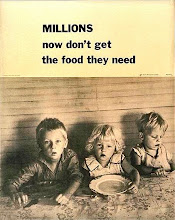Click image to view full-size
Even better, November 2010 posted one of the 30 largest year-over-year jumps seen in 633 months of data! This means that 2010 is now in 2nd place, tied with 2003 and 1988, as the year with most number of Top-30 entries.
Considering that the Top-30 represents less than 5% of Mauna Loa monthly data, 2010 has earned its place in the annals of melting ice. The odds are, however, that most Top-30 records will be replaced over the next few years. Global population is approaching 7 billion. The global middle class is growing exponentially faster than general population. For example, China's new car market was one-tenth of America's ten years ago. Now it's one-half, with no indications that growth will ever stop.
China recently finished the major phase of it's inter-province expressway system, 13 years ahead of schedule. China's expressway system is second only to the US in terms of mileage. India's economy is now growing at double digit rates. It's fair to say that the aggregate developing world economy has been growing faster - in some cases, much faster - than the US and Euro-zone over the past three years. China's economy has expanded by roughly one-quarter since the Great American Banking Disaster began to unfold. No wonder it's middle class is exploding.
The leading indicator for CO2 is economic activity. Specifically, the size and purchasing power of the global middle-class. CO2 is in turn a leading indicator for global average temperature, which is a nearly real-time indicator for ice melt. The average annual increase in Mauna Loa data over the past 10 years is 2ppm. Top-30 increases range from 33% to 96% above 10-year average. Twenty-three of the Top-30 are clustered in the past 12 years. The next illustration shows temporal positioning of year-over-year monthly increases that exceed long term average growth, represented by the red "peaks".
Click image to view full-size
With 2010's strong CO2 performance and slow improvement in developed nation economies, 2011 may be a breakout year. Perhaps not as awesome as 1998, but even those records will eventually fall. Visit each month for updates and lots of mega-melt enthusiasm.
While global-warming denialism is beyond ridiculous, the notion that less than 5% of global population can lead the developing world away from carbon-based economics is almost as bad. The developing world follows our economic playbook. In context of unintended consequences, we did our job too well. The previous illustration depicts an accelerating trend. When historians search for the defining event of the 21st century, some may conclude that it occurred in 1944.























+breed+danger+6x8.jpg)











+5x7.jpg)


No comments:
Post a Comment